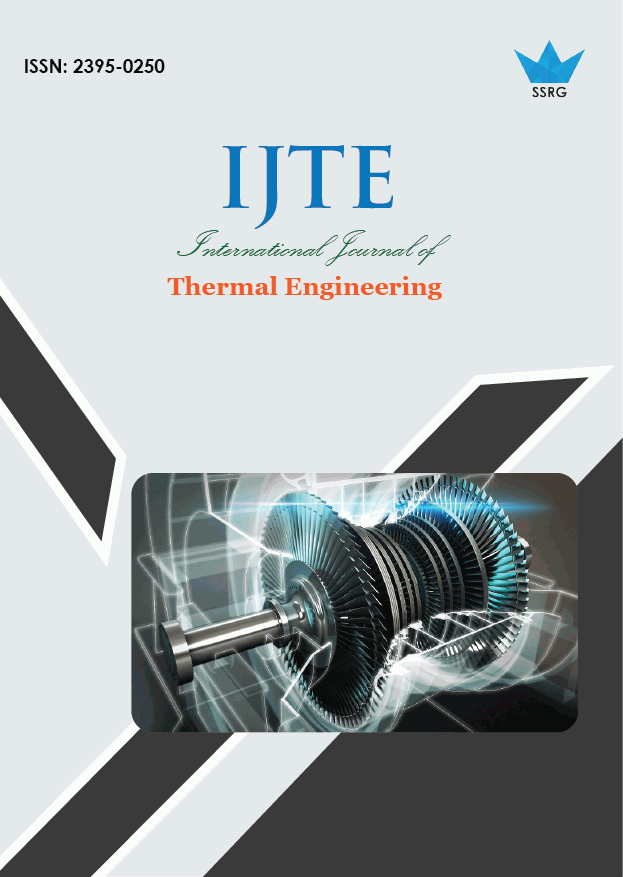Thermal Investigation of Charring Materials Based on Pyrolysis Boundary Representation

| International Journal of Thermal Engineering |
| © 2015 by SSRG - IJTE Journal |
| Volume 1 Issue 1 |
| Year of Publication : 2015 |
| Authors : Dr.C.Ravikumar, J.Kannan |
How to Cite?
Dr.C.Ravikumar, J.Kannan, "Thermal Investigation of Charring Materials Based on Pyrolysis Boundary Representation," SSRG International Journal of Thermal Engineering, vol. 1, no. 1, pp. 1-8, 2015. Crossref, https://doi.org/10.14445/23950250/IJTE-V1I1P102
Abstract:
Charring thermal defense systems have been used to guard hypersonic vehicles from high heat loads. The pyrolysis of charring materials is an intricate corporeal and compound phenomenon. Based on the pyrolysis boundary model, a simulating advance for charring ablation has been calculated in order to acquire one dimensional transient thermal performance of homogeneous charring materials in reentry capsules. As the mathematical results designate, the pyrolysis rate and the surface warmth under a given heat flux rise abruptly in the commencement, then arrive at a plateau, but the high temperature at the bottom rises very gradually to avoid the structural materials from being passionate dangerously. Pyrolysis mechanism can play a significant role in thermal security systems subjected to severe aerodynamic heat. Ablation and pyrolysis of charring equipment were investigated through an ablation test motor. In addition, it is very significant to understand the physical and chemical performance of the TPS subjected to aerodynamic heat.
Keywords:
pyrolysis, pyrolysis interface model, charring materials, thermal protection system.
References:
[1] Hai-Ming HUANG, Wei-Jie LI , and Hai-Ling YU, Thermal Analysis Of Charring Materials Based On Pyrolysis Interface Model, THERMAL SCIENCE, Year 2014, Vol. 18, No. 5, pp. 1591-1596.
[2] Huang, H. M., et al., Thermal Response of Heat-resistant Layer with Pyrolysis, Thermal Science, 16 (2012), 1, pp. 69-78.
[3] Ogasawara, T., et al., Ablation Behavior of Sic Fiber/Carbon Matrix Composites under Simulated Atmospheric Reentry Conditions, Composites Part A, 42 (2011), 3, pp. 221-228.
[4] Ninković, D. P., Thermal and Aerodynamic Performances of the Supersonic Motion, Thermal Science, 14 (2010), 4, pp. 1089-1100.
[5] Huang, H. M., et al., The Inverse Problem in Zero Linear Ablation of Aluminizing Carbon Composites under High Heat Flux, Thermal Science, 17 (2013), 5, pp. 1323-1327.
[6] Gokcen, T., et al., Computational Analysis of Arcjet Stagnation Tests Including Ablation and Shape Changed, Journal of Thermo physics and Heat Transfer, 24 (2010), 4, pp. 694-707.
[7] Venkatapathy, E., et al., Thermal Protection System Development, Testing, and Qualification for Atmospheric Probes and Sample Return Missions: Examples for Saturn, Titan and Stardust-Type Sample Return, Advances in Space Research, 44 (2009), 1, pp. 138-150.

 10.14445/23950250/IJTE-V1I1P102
10.14445/23950250/IJTE-V1I1P102